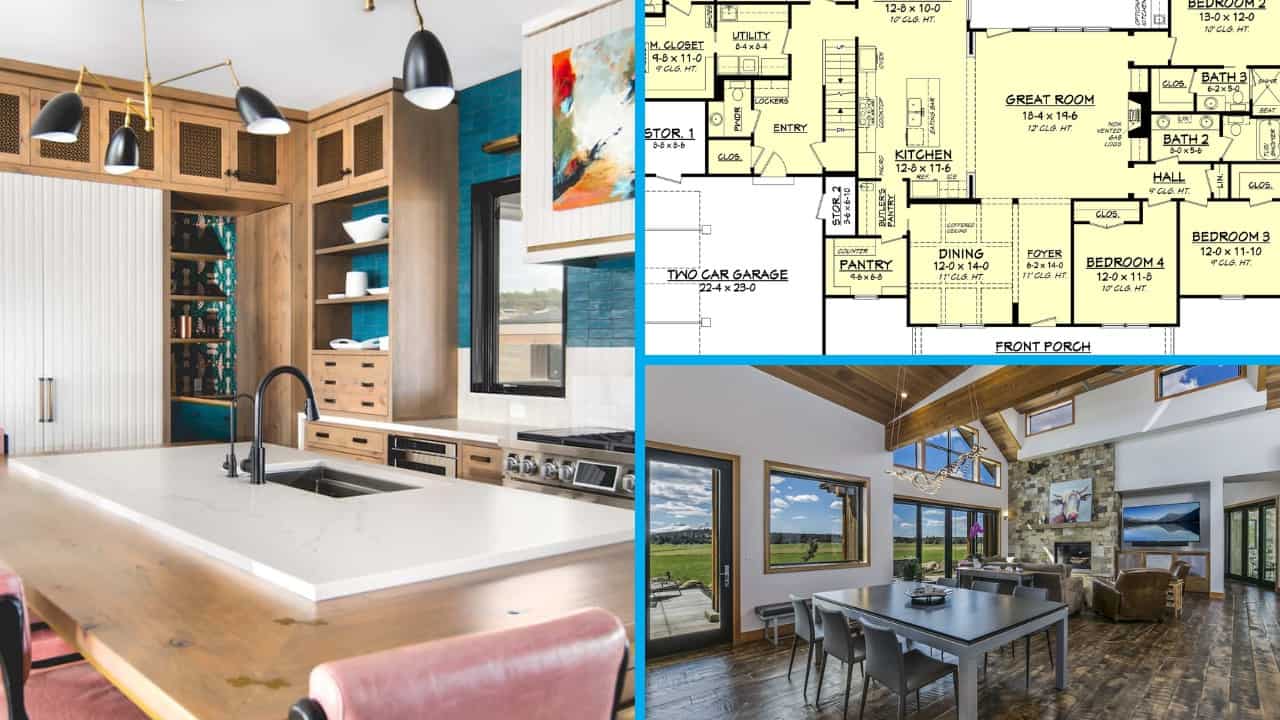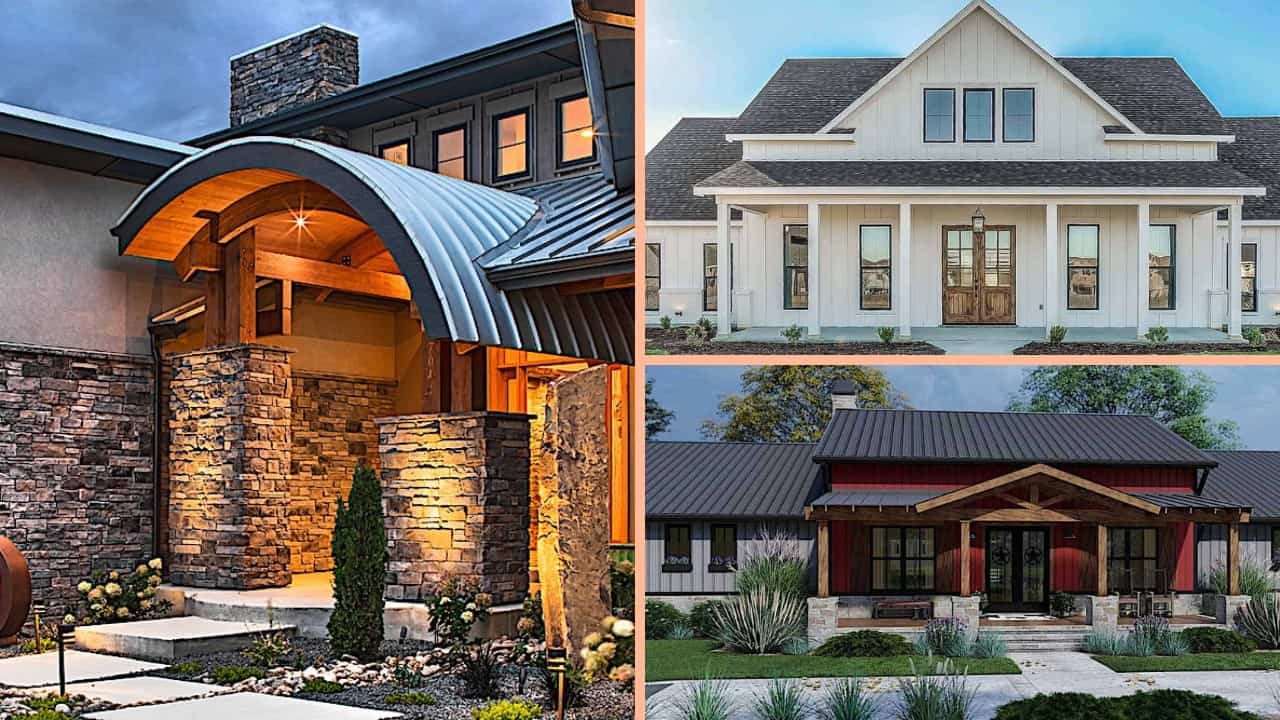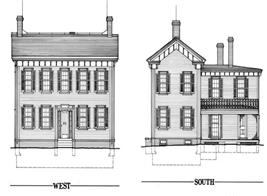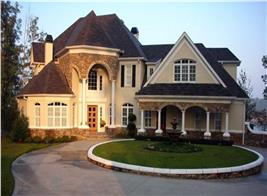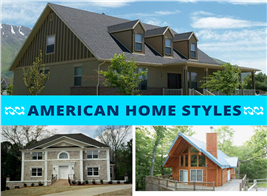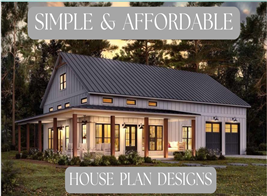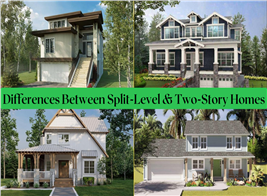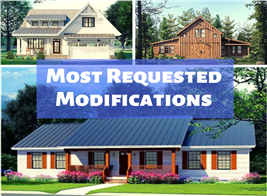The Defining Features of Midwest Home Architecture
By Rexy Legaspi | Updated April 03, 2023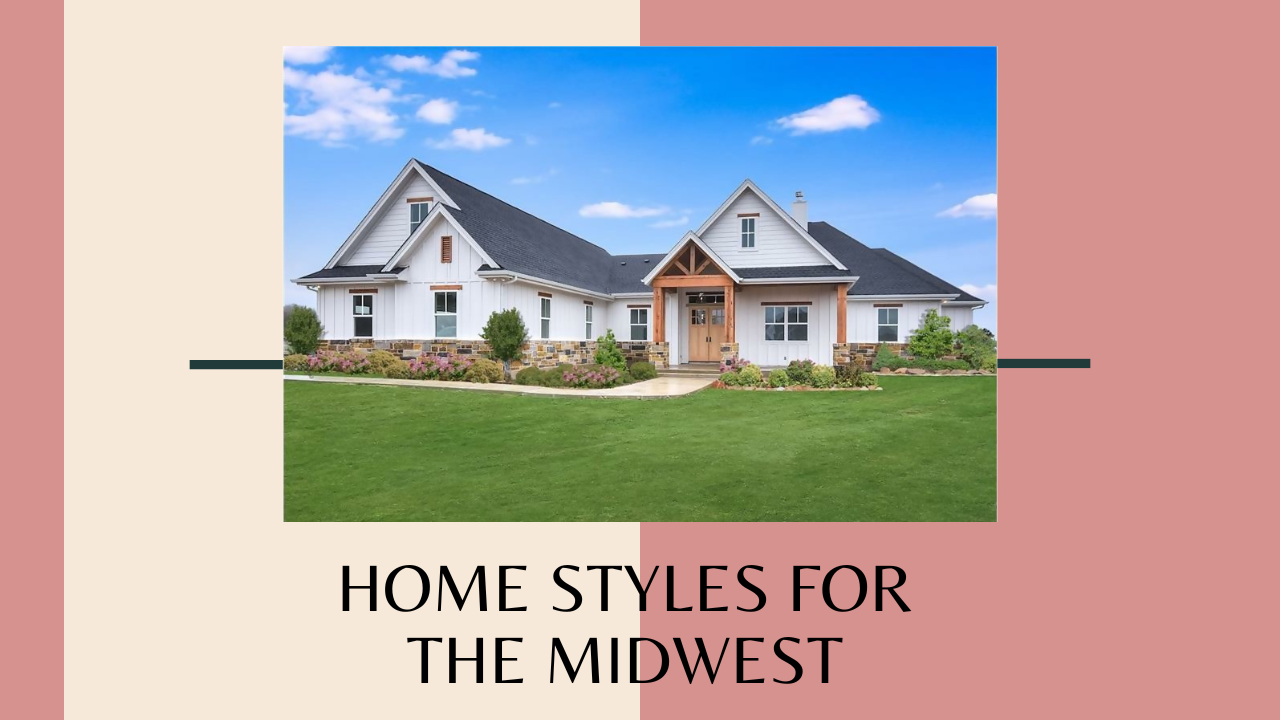
These Homes Embrace Structural Elegance and Simplicity of Form
Often misjudged as plain – and even boring – the Midwest Region is not only prairie lands, farms, and lakes. Among other things, the Midwest is noted for significant architectural gems from renowned trailblazers Frank Lloyd Wright and the Chicago Group, Louis Sullivan, Marion Mahony Griffin, and Ludwig Mies van Der Rohe.
Greatly influenced by the Arts and Crafts Movement that decried the opulence and over-decoration of some European styles and inspired by the vast expanse of the Midwests rolling plains and wide-open spaces, Wright created the Prairie style, a new American architectural design more fitting to the country’s culture. It was a reflection of the Arts and Crafts Movement’s emphasis on craftsmanship, simplicity and nature.
With the iconic Prairie and Craftsman styles – offshoots of the Movement – the Midwest became the center of exciting and experimental residential architecture that emphasized elegant, clean lines, decorative restraint, and a connection to the natural landscape.
So it can be said that with Frank Lloyd Wright and the Prairie design, modern American architectural style was born and nurtured in the Midwest.
Let’s look at the features, influences, and history of the Midwest Region’s residential architecture.
6 features You Can Expect to See
“Everything changes, but nothing changes.”
As time marched on to the 21st Century, the rich legacy of Wright, Mies and their peers lives on. While a new generation of architects followed in the masters’ footsteps and stamped their identities in their designs, they have remained faithful to the simple, elegant aesthetic and experimental nature of Midwest residential styles.
If you walk around your neighborhood, you may find a number of the defining features of Midwest homes in the various architectural styles common to the region:
1. One-to-two-story structures with continuous horizontal lines and a low-pitched or flat roof emphasized the simple design that architects in the early 1900s were aiming for.
Simplicity and elegance define the exterior of this 1-story Prairie style home with 2 to 4 bedrooms and 2.5 to 3.5 baths, depending on whether you finish the basement or not. Check out the continuous horizontal lines and clean edges of the roof, stone facing, and garage doors (Plan #194-1014).
2. Neutral earth tones that resemble grain fields and sprawling landscapes are used in both the exterior and interior of the home.
3. Natural building materials like brick and stone are often found in exterior facades. Some homes may feature traditional siding and roof tiling that incorporates various types of wood common to the area.
4. Gables and dormers are part of the traditional feel and charm of Midwest Region homes.
Top: An eye-popping 1-story Craftsman style home with 4 bedrooms and 2.5 baths features fascinating gables and dormers; and most of the defining characteristics of Midwest Region homes: earth tones, natural building materials (siding of brick, stone and wood accents), flawless landscaping, an open floor plan, and high ceilings as shown in the floor plan below. Bottom: From the vaulted front porch, walk into the foyer and the inviting open space of the huge Great Room and its high ceilings (Plan #142-1170).
5. Open floor plans – When the Chicago Group designed homes, they opened up interior spaces, getting rid of the walls that separated the kitchen, dining, and living areas – to create an atmosphere of openness one would experience in a vast prairie.
The open concept design is fully unfolded in this glorious Great Room of a two-story, four-bedroom, 3.5-bath Craftsman style home with 3897 square feet of living space. There is a perfect flow from one space to the other in this configuration. And with the large glass windows providing panoramic views of the surroundings, there is a smooth connection between the indoors and outdoors (Plan #161-1067).
6. High ceilings in the main living and dining areas evoke more of the feeling of open, airy, bright, and wide spaces of the plains.
Theres nothing like high ceilings to create an atmosphere of a breezy, open space. Check out this cozy family room in a luxurious 2-story, 5-bedroom transitional Craftsman style home. The stone fireplace extends to the high ceiling (2 stories tall!); clerestory windows and large glass doors allow natural light to filter in the space (Plan #161-1075).
The Faces of Midwest Residential Architecture
It’s no surprise that when Midwest residential architecture comes up in conversations, the styles always mentioned first and often are the Prairie and Craftsman designs – the most popular representations of the Arts and Crafts style. But in addition to the Prairie, Craftsman, and Arts and Crafts house plans, there are quaint Farmhouse styles and fashionable Modern plans.
All of these residential styles reflect the welcoming character of the Midwest region, its landscape, and its affinity with experimental designs.
Arts and Crafts Style
The big design “umbrella” that includes the Prairie and Craftsman home plans, the Arts and Crafts style is a revival of good craftsmanship and simplicity in design. It also shares a number of common features with Craftsman plans like columns on stone pedestals, exposed rafters and beams, gables, wood and stone exteriors, and built-in woodwork and fixtures.
Top: Here’s a wonderful sight for sore eyes! This charming 2-story Arts and Crafts style home with a vibrant front garden and the spacious covered front porch is straight from a storybook. The delightful home includes an exterior of rock, shakes and stone, 3 bedrooms, 2.5 baths, gable roofs, columns, and multi-pane windows. Bottom: Go up the steps to the second floor, and marvel at the spectacular woodwork on the stairs. The wood railing on the landing matches the classic elegance and simplicity of the woodwork on the stairs (Plan #115-1000).
Prairie Style
Mostly associated with Frank Lloyd Wright and the Chicago Group, the Prairie style was the first plan to open up a home’s interior space – and create a Great Room that encompassed the kitchen, dining and living areas. Without walls and doors to section them off, there was a smooth and natural flow and one continuous space.
Prairie style homes are basically symmetrical but can also include wings. They are marked by their integration with their natural surroundings and restraint in the use of décor accents. They can be one or two stories with horizontal lines, windows assembled horizontally, low-pitched roofs, overhanging eaves, and use of natural materials, particularly stone and wood.
… the top windows forming a horizontal band and a tall glass door that links the interior space to the surrounding landscape (top). The glass windows, high ceilings, and open floor plan are illustrated in the amazing family room shown at bottom (Plan #161-1058).
Craftsman Style
Influenced by the Arts and Crafts Movement, the popular Craftsman style house has been around since the early 1900s. Although it took a back seat to the Ranch and Mid-Century styles in the 1920s, the timeless Craftsman style appeals to a broad spectrum because of its classic details, woodwork, and back-to-nature aesthetic.
The Craftsman home is defined by details like gable roofs, front porches, columns on pedestals, stone accents, exposed rafters, multi-pane windows, and built-in fixtures. Todays transitional Craftsman home brings a contemporary feel to the style, along with the first-floor master suite and open floor plan.
Top: Talk about the back-to-nature aesthetic of the Craftsman style! This sprawling 2-story, 3,815-sq.-ft., 3-bedroom, 2.5 bath Craftsman style home is built on a property surrounded by tall trees and wide-open spaces. A mix of shakes, rock, and stone – plus the heavy wood door, exposed rafters on the covered front porch, columns, and multi-pane windows – add to its charm and appeal. Bottom: Get ready to step into the covered front porch and admire its gorgeous details. The earth tones, stonework, matching columns on brick pedestals, the splashes of color provided by the cushions on the rocking chairs, the area rug, and the potted flowers are truly remarkable (Plan #108-1789).
Farmhouse Style
Considered one of the most picturesque and enchanting portraits of Americana, the Farmhouse style home in the Midwest dates back at least to the 1830s. It was the time when European immigrants settled in Illinois, Iowa, Minnesota, and Wisconsin and built their own homes. While the first Farmhouse homes were straightforward structures constructed of crude materials, they were welcoming, warm, safe and comforting.
From its humble beginnings, the Farmhouse home has evolved into a very stylish and popular design sought after coast to coast. Through all the reconstructions and renovations, Farmhouse style homes are still identifiable by their signature feature: the wraparound or wide front porch. Other characteristics include gabled roofs, simple vertical lines, fireplaces, and large kitchens.
Top: A dream of a Farmhouse! This magnificent one-story home surrounded by beautiful landscaping features a spacious wraparound porch, 6 bedrooms, 4 bathrooms, and 6,707 total sq. ft. of space. There is an attached in-law suite with its own private entrance, an open plan Great Room with a family room, a large kitchen, and a dining area. Bottom: The floor plan illustrates the attached in-law suite (upper left in plan) with a separate entrance and the open plan design of the main house, which includes a Great Room and a very spacious kitchen, typical of Farmhouse style homes (Plan #193-1017).
Modern (Scandinavian) Style
Another house plan closely associated with the Midwest Region is the Modern Scandinavian design. There is no surprise here since a number of Nordic immigrants settled in the Midwest and Great Plains – Illinois, Iowa, Minnesota, North Dakota, and Wisconsin – between 1825 and 1925.
The Modern Scandinavian design is highly influenced by the Nordic regions cold, short winter days and a desire for interiors to be cozy yet bright. These factors resulted in an architecture defined by spare elegance, lighter colors, simpler forms, comfort, and open plans. In fact, the Chicago Tribune described the style as “high in function, low on fuss” because of its simplicity, clean lines, minimalism, and practicality.
Some of these design features include pale colors, stainless steel, re-purposed wood, a unique asymmetrical design, and expansive windows that allow natural light into the home’s interiors.
A wonderful Contemporary home with 5 bedrooms and 3.5 baths exhibits the simplicity, clean lines, and pale tones common to the Modern Scandinavian style. This home features a covered outdoor space that allows views of the surrounding landscape (Plan #202-1021).
Here are five concepts that make the Modern Scandinavian style so stunning in its simplicity:
1. Use of natural light – The Scandinavian design creates light-enhancing elements like huge glass windows, doors, skylights, and light interior colors to make up for the short days and lack of during the cold months.
2. Comfort – A trend that is permeating the architectural landscape is “hygge” – one of the key elements of Scandinavian design that focus on comfort in the home. Some ways of achieving it are by creating cozy spaces that are easily heated, using soft light fixtures, and incorporating the appropriate colors and materials in the interior design.
3. Use of sleek shapes and clean lines that reinforce the innate concept of simplicity.
Eye-catching shapes and soft color tones make this 1-story 3-bedroom, 2-bath Contemporary example of Modern Scandinavian style truly stunning. Take a look at the interesting rooflines, windows on a slant, and landscaped surroundings (Plan 126-1931).
4. Use of natural materials like wood teak, rosewood, birch, and ash to create warm interiors.
5. Integration with nature – Very much in keeping with the Arts and Crafts and Prairie styles, the Modern Scandinavian design is also big on connecting a home’s interiors with the outdoors. Another reason to have wide glass windows and doors is not just to let the light in but also to give an unobstructed view of the outdoor surroundings and views.
A Brief History of Midwest Region Home Plans
Fueled by the British Arts and Crafts Movement in the 1800s that rejected the ornate and elaborate designs of the Victorian Era, the United States created its own Arts and Crafts style. Spearheaded by Gustav Stickley, a furniture company owner who published a magazine called The Craftsman, the American Movement mimicked the British Movement’s ideals of simplicity, craftsmanship and good design.
From these concepts that focused on simplicity of form and minimalism in décor were “born” the Arts and Crafts and Craftsman architectural styles. (Most architecture enthusiasts know, the Craftsman design derived its name from Stickley’s magazine.)
These same principles motivated Frank Lloyd Wright and the Chicago Group to create the Prairie School, the new architectural design suited to American lifestyles. Inspired by the countrys wide plains and flat landscape, Wright developed a style defined by open floors, dramatic horizontal lines, craftsmanship, solid construction, restraint in decoration, and integration with nature.
Moving into the 21st century, we find that the ideas of simplicity and minimalism, elegance, link to the indoors and outdoors, use of natural materials, and open plans still live in Modern house plans. It’s not far-fetched to say that the concepts of Scandinavian architecture that made their way into Modern house styles were derived from the ideals of the Arts and Crafts Movement and the Prairie School.
It’s time to rethink the misconception of Midwest Region House plans! Start imagining the wide-open spaces, the bare elegance, warmth, and comfort of these homes.
Footnote: The lead image in this article is a sophisticated 1-story Craftsman style home with more than 3,000 sq. ft. of space, five bedrooms and 3.5 baths. For details on this attractive home, check this link: (Plan #142-1199)



















